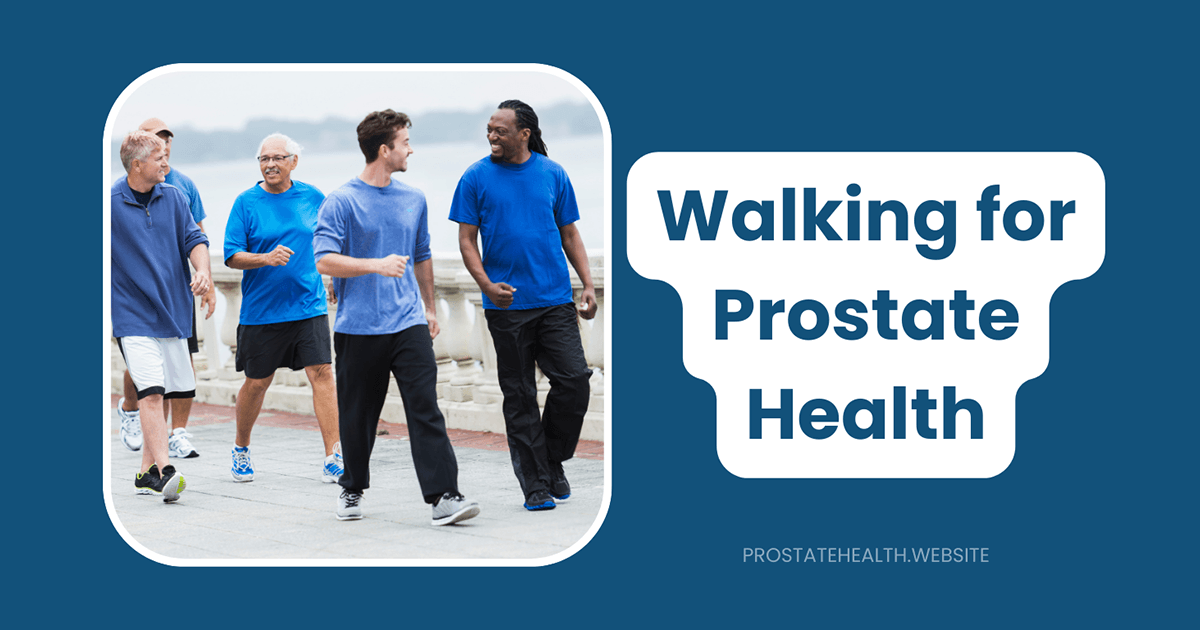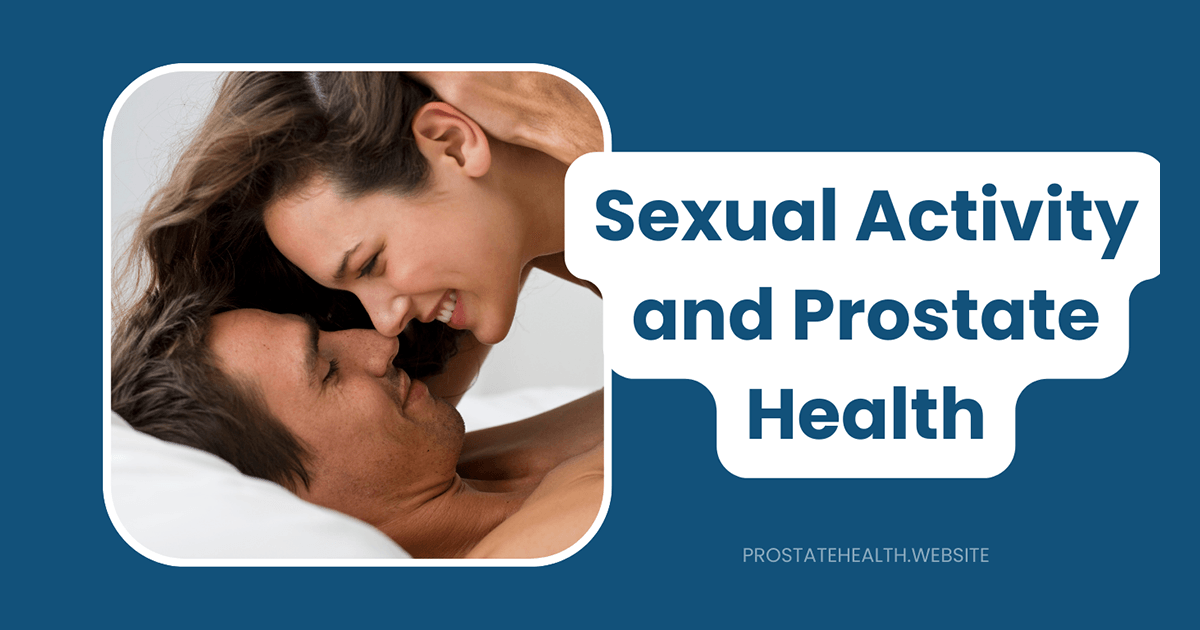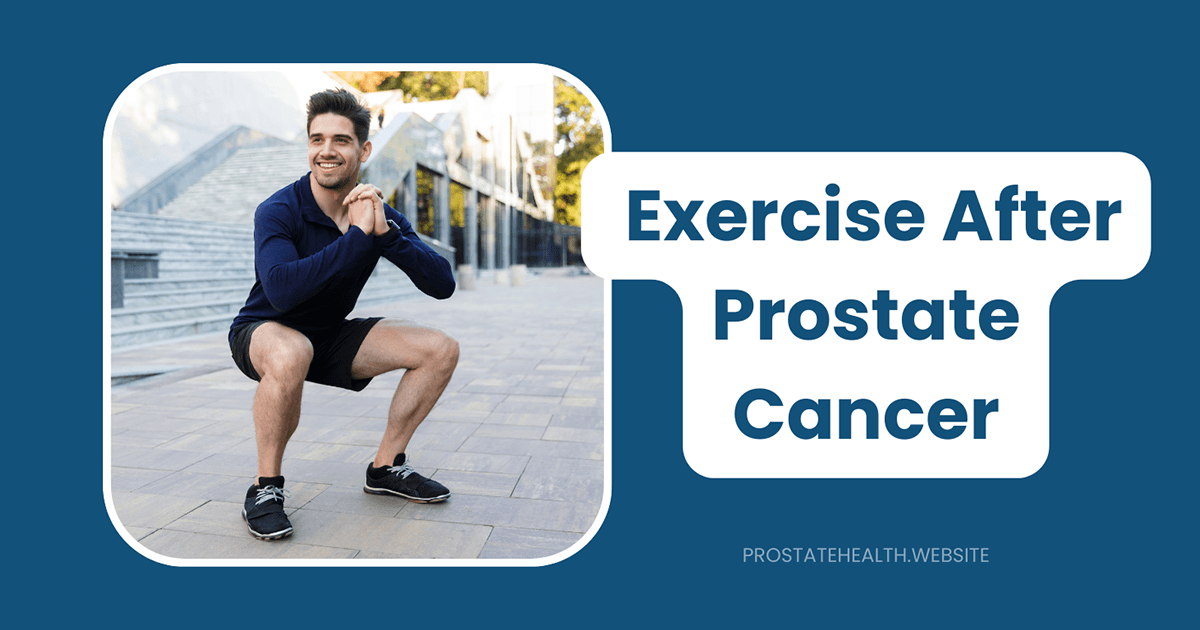Walking for Prostate Health: How Many Steps Do You Need?

When James, a 62-year-old retired accountant, was diagnosed with an enlarged prostate, his urologist suggested a surprising addition to his treatment plan: walking.
“I was expecting medication, maybe surgery,” James told me. “But my doctor said that regular walking could help manage my symptoms and potentially slow the progression. I was skeptical at first, but after three months of daily walks, I noticed significant improvements in my urinary symptoms and overall energy.”
James’s experience reflects a growing body of research highlighting the benefits of walking for prostate health. This simple, accessible form of exercise is increasingly recognized as a powerful tool for both preventing prostate problems and managing existing conditions.
But how much walking is enough? Is there a magic number of steps that optimizes prostate health? This comprehensive guide explores the science behind walking for prostate health and provides practical recommendations for incorporating this beneficial activity into your daily routine.
The Science: How Walking Benefits Prostate Health
Before discussing specific step counts, let’s understand why walking is particularly beneficial for prostate health:
Reduced Inflammation
Chronic inflammation plays a role in various prostate conditions, including benign prostatic hyperplasia (BPH) and prostate cancer. Regular walking has been shown to reduce systemic inflammation through several mechanisms:
- Decreases production of inflammatory cytokines
- Improves immune function
- Reduces oxidative stress
A 2023 study published in the Journal of Urology found that men who engaged in regular moderate exercise, including walking, had lower levels of inflammatory markers in prostate tissue compared to sedentary men.
Improved Circulation
Walking enhances blood flow throughout the body, including to the prostate gland:
- Better circulation delivers more oxygen and nutrients to prostate tissue
- Improved blood flow helps remove waste products
- Enhanced circulation may reduce prostate congestion
Dr. Sarah Johnson, urologist at Memorial Urology Center, explains: “The prostate gland benefits significantly from improved circulation. Walking increases blood flow to the pelvic region, which can help reduce congestion in the prostate and potentially alleviate symptoms of conditions like BPH.”
Hormonal Balance
Walking may help regulate hormones that affect prostate health:
- Moderate exercise can help maintain healthy testosterone levels
- Regular physical activity may reduce insulin resistance
- Walking helps control stress hormones like cortisol, which can impact prostate health
Weight Management
Maintaining a healthy weight is crucial for prostate health, and walking is an effective weight management tool:
- Regular walking burns calories and helps prevent obesity
- Excess weight is associated with increased risk of aggressive prostate cancer
- Obesity is linked to more severe BPH symptoms
A Harvard-led study found that men who maintained a healthy weight through diet and exercise, including walking, had a lower risk of developing BPH and its associated urinary symptoms.
Walking and Prostate Cancer: The Research
Recent research provides compelling evidence for walking’s role in prostate cancer prevention and management:
Prevention
A landmark 2025 study published in the British Journal of Sports Medicine followed over 85,000 adults using wrist accelerometers to track their daily steps. The findings were significant:
- Participants who walked 7,000 steps daily had an 11% lower overall cancer risk compared to those walking 5,000 steps
- Those reaching 9,000 steps daily showed a 16% lower cancer risk
- Benefits plateaued after 9,000 steps, suggesting there’s no need to push for the often-cited 10,000 steps
While this study looked at overall cancer risk rather than prostate cancer specifically, other research has shown similar protective effects for prostate cancer.
After Diagnosis
For men already diagnosed with prostate cancer, walking appears to offer significant benefits:
- A study published in Cancer Research found that men who walked briskly for at least three hours per week after prostate cancer diagnosis had a 57% lower rate of cancer progression compared to those who walked at a slower pace for fewer than three hours weekly
- Even men who walked briskly for less than three hours weekly showed benefits compared to slower walkers
- Walking may help reduce side effects of prostate cancer treatments, including fatigue and depression
Dr. Michael Chen, oncologist specializing in prostate cancer, notes: “The evidence for walking after a prostate cancer diagnosis is particularly compelling. It’s one of the few interventions that can potentially slow disease progression while simultaneously improving quality of life during treatment.”
Walking and BPH: Managing Symptoms
For the millions of men dealing with benign prostatic hyperplasia (BPH), walking offers specific benefits:
Symptom Improvement
Multiple studies have demonstrated that regular walking can help alleviate BPH symptoms:
- A study in the Journal of Urology found that men who walked regularly reported less severe lower urinary tract symptoms (LUTS)
- Walking for 2-3 hours weekly was associated with a 25% lower risk of severe BPH symptoms
- Regular physical activity may improve urinary flow rates and reduce residual urine volume
Mechanism of Action
Walking may help BPH symptoms through several pathways:
- Reduces sympathetic nervous system activity, which can decrease prostatic smooth muscle tone
- Improves pelvic floor muscle strength and function
- Decreases pelvic congestion that can exacerbate urinary symptoms
- May reduce nighttime urination by improving sleep quality
James, whom we met at the beginning of this article, shares: “After two months of walking 30 minutes daily, I noticed I was getting up only once at night instead of three or four times. My daytime frequency improved too. It wasn’t a complete cure, but the improvement was significant enough to make a real difference in my quality of life.”
How Many Steps Do You Need? Evidence-Based Recommendations
Based on the latest research, here are evidence-based recommendations for optimizing prostate health through walking:
For General Prostate Health and Cancer Prevention
- Minimum effective dose: 5,000 steps daily
- Target for optimal benefits: 7,000-9,000 steps daily
- Frequency: Daily or most days of the week
The 2025 British Journal of Sports Medicine study found that cancer risk reduction benefits plateaued at around 9,000 steps, suggesting this may be an optimal target for cancer prevention.
For Men with Prostate Cancer
- Step count: Aim for enough steps to accumulate at least 3 hours of walking weekly
- Intensity: Brisk pace (able to talk but not sing)
- Frequency: Spread throughout the week (e.g., 30 minutes, 6 days weekly)
Research indicates that walking briskly for at least 3 hours weekly may significantly reduce the risk of cancer progression.
For Men with BPH
- Step count: Enough to accumulate 2-3 hours of walking weekly
- Intensity: Moderate (comfortable but purposeful pace)
- Frequency: At least 5 days per week
Studies suggest that 2-3 hours of weekly walking is associated with a 25% reduction in BPH symptoms.
Walking Intensity Matters
While step count is important, research suggests that pace also plays a role:
- Brisk walking (3+ miles per hour) appears more beneficial than slower walking for both cancer and BPH
- However, any walking is better than none—start where you are and gradually increase pace
- Consider incorporating short bursts of faster walking into your routine (interval training)
Dr. Jennifer Williams, exercise physiologist, explains: “For prostate health, both quantity and quality of steps matter. Aim for a pace that elevates your heart rate somewhat and makes you breathe a bit harder, but still allows you to carry on a conversation.”
Implementing a Walking Routine for Prostate Health
Knowing how many steps to take is one thing; consistently achieving that goal is another. Here are practical strategies for implementing an effective walking routine:
Starting Point: Assess Your Current Activity
Before setting goals:
- Track your current daily steps for one week using a smartphone, fitness tracker, or pedometer
- Calculate your daily average
- Set an initial goal of increasing by 1,000 steps
Gradual Progression
If you’re currently sedentary:
- Week 1-2: Add 1,000 steps to your baseline
- Week 3-4: Add another 1,000 steps
- Continue adding 1,000 steps every 2 weeks until you reach your target
For example, if you currently average 3,000 steps daily, aim for 4,000 for two weeks, then 5,000, and so on until you reach your target of 7,000-9,000.
Making Walking Part of Your Routine
Consistency is key. Try these strategies:
- Morning walks: Start your day with a 15-20 minute walk
- Walking meetings: Take phone calls while walking
- After-meal walks: Even a 10-minute walk after dinner aids digestion and adds steps
- Commercial breaks: Walk in place during TV commercials
- Park farther away: Add steps by parking at the far end of parking lots
- Take the stairs: Avoid elevators and escalators when possible
- Walking buddy: Find a friend or join a walking group for accountability
Tracking Your Progress
Modern technology makes step tracking easier than ever:
- Smartphones with built-in step counters
- Fitness trackers and smartwatches
- Dedicated pedometer devices
- Free walking apps that gamify the experience
Robert, 68, who increased his daily steps from 2,500 to 8,000 after a BPH diagnosis, shares: “My fitness tracker was a game-changer. Seeing my progress and having daily goals motivated me to keep going, even on days when I didn’t feel like walking.”
Optimizing Your Walking Routine for Maximum Benefit
To get the most prostate health benefits from your walking routine:
Walking Technique
- Posture: Stand tall with shoulders relaxed and head up
- Arm swing: Bend arms at 90 degrees and swing naturally
- Stride: Take comfortable steps, rolling from heel to toe
- Breathing: Breathe naturally and deeply
Terrain Considerations
- Varied surfaces: Mix flat paths with gentle hills for increased intensity
- Natural settings: Walking in parks or nature trails may provide additional stress-reduction benefits
- Indoor options: Shopping malls, indoor tracks, or treadmills provide weather-proof alternatives
Hydration and Timing
- Stay hydrated: Drink water before and after walking
- Timing for BPH: If you have urinary frequency, consider timing longer walks when symptoms are less bothersome
- Evening considerations: For men with nocturia (nighttime urination), avoid drinking large amounts of fluid right before evening walks
Beyond Walking: Complementary Approaches
While walking is excellent for prostate health, a comprehensive approach includes:
Additional Exercises
- Pelvic floor exercises: Kegels can help with urinary control
- Resistance training: 2-3 sessions weekly to maintain muscle mass and bone density
- Stretching: Particularly for the hips and lower back to support comfortable walking
Dietary Considerations
- Mediterranean diet: Rich in fruits, vegetables, whole grains, and healthy fats
- Adequate hydration: Despite concerns about urinary frequency, proper hydration is important for prostate health
- Limited alcohol and caffeine: Both can irritate the prostate and bladder
Stress Management
Walking itself reduces stress, but consider adding:
- Deep breathing practices during walks
- Mindfulness or meditation
- Adequate sleep (7-8 hours nightly)
Special Considerations and Precautions
While walking is generally safe, keep these considerations in mind:
When to Consult Your Doctor First
- Recent prostate surgery or procedures
- Severe or worsening urinary symptoms
- Bone metastases from advanced prostate cancer
- Other health conditions like heart disease or arthritis
Adapting for Limitations
- Joint pain: Consider walking in a pool or using walking poles
- Balance concerns: Use a walking aid if needed and choose smooth, even surfaces
- Severe urinary frequency: Plan routes with bathroom access
- Fatigue from cancer treatment: Start with very short walks and rest as needed
Warning Signs to Watch For
Stop walking and consult your doctor if you experience:
- Chest pain or severe shortness of breath
- Dizziness or lightheadedness
- Unusual pain in the pelvic region
- Blood in urine after walking
Real Success Stories: Walking for Prostate Health
David, 71, diagnosed with early-stage prostate cancer: “After my diagnosis, I joined a walking group specifically for men with prostate cancer. We meet three times weekly for hour-long walks. My PSA has remained stable for two years, and the camaraderie has been as beneficial as the exercise itself.”
Michael, 58, with moderate BPH: “I started tracking my steps after my BPH diagnosis and aimed for 8,000 daily. Within two months, my nocturia decreased from 3-4 times nightly to just once. My daytime frequency improved too. Walking has become non-negotiable in my daily routine.”
Thomas, 65, prostate cancer survivor: “During radiation treatment, walking helped me manage fatigue. I started with just 2,000 steps and built up to 7,000 over several months. Three years post-treatment, I’m now averaging 9,000 steps daily and feeling better than I have in years.”
Conclusion: Taking the First Steps
The evidence is clear: walking offers significant benefits for prostate health, from cancer prevention to symptom management for conditions like BPH. While the optimal step count appears to be between 7,000-9,000 steps daily, the most important factor is consistency.
Remember these key points:
- Start where you are: Your current step count is your baseline
- Progress gradually: Increase by about 1,000 steps every two weeks
- Aim for brisk walking when possible, but any pace is beneficial
- Consistency matters more than occasional long walks
- Track your progress to stay motivated
As James, whom we met at the beginning, reflects: “Walking costs nothing, has no side effects, and benefits my entire body—not just my prostate. It’s become the cornerstone of my prostate health plan, and I only wish I’d started sooner.”
Whether you’re looking to prevent prostate problems or manage existing conditions, walking offers a simple, accessible, and effective approach. The journey to better prostate health begins with a single step—and continues with thousands more.
Have you used walking to improve your prostate health? What strategies have helped you increase your daily steps? Share your experiences in the comments below.






